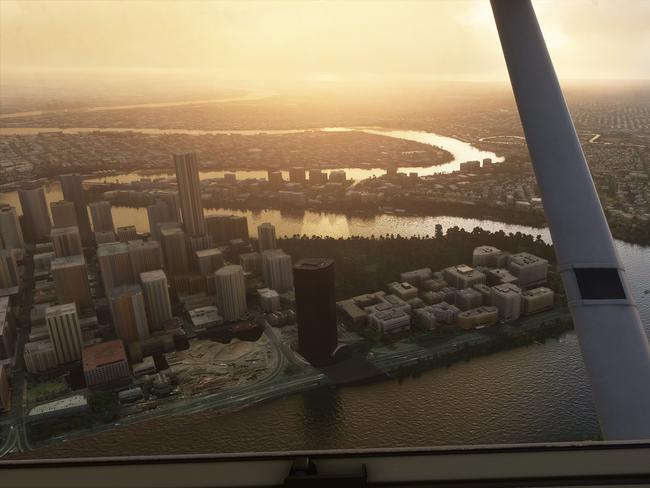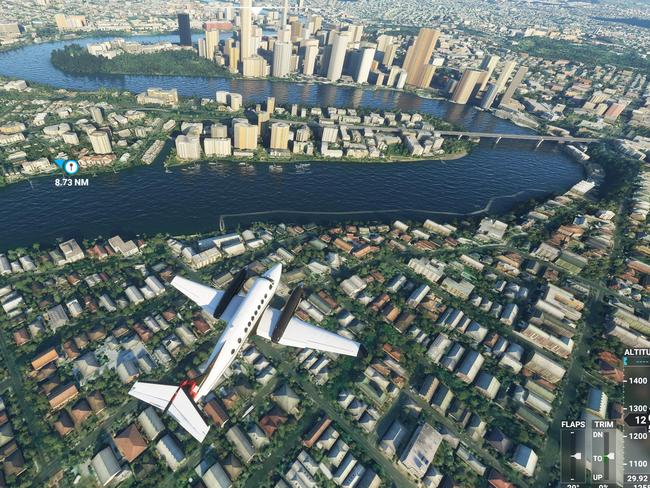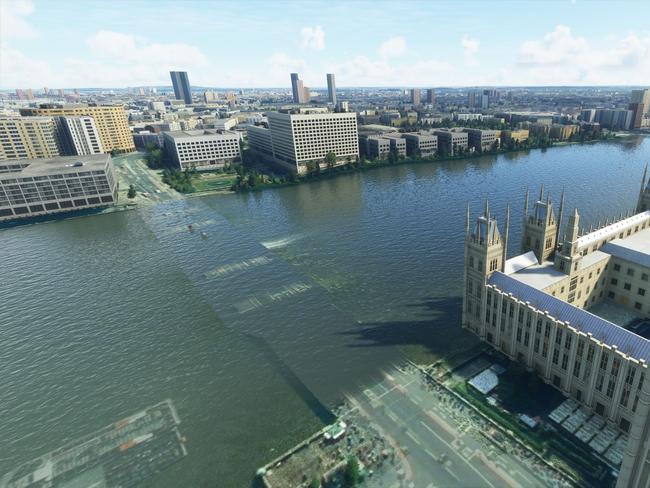Microsoft Flight Simulator simulates Brisbane, but forgets the bridges
Its landed the title of Microsoft’s PC Game of the Year from critics only a few days after its release, but Microsoft Flight Simulator’s digital recreation of Brisbane has a glaring omission.
Lifestyle
Don't miss out on the headlines from Lifestyle. Followed categories will be added to My News.
When it comes to Australian geography in digital media, it can sometimes be hit or miss, but a new blunder in one of Microsoft’s biggest games of the year has left Brisbane gamers scratching their heads.
Brisbane River renamed in Google Maps blunder
Company's workload doubles with chopper success
While the South East is no stranger to having itself featured within video games, with the Gold Coast recently being re-created in racing game Forza Horizon 3, Brisbane has often been snubbed from a feature role.
Though Microsoft’s newest installation into their Flight Simulator series, which allows virtual pilots to experience a digital recreation of Planet Earth from a digital cockpit, has landed some criticism over its depiction of the river city.

While the Gabba, Suncorp Stadium and even 1 William Street appear to be crafted to some degree of digital identity, the Story Bridge, Gateway Bridges, William Jolly Bridge and Go-Between Bridge all appear to be represented as basic bridges.
In an even more alarming sight, the Riverside Expressway, Captain Cook Bridge, Victoria Bridge and Kurilpa Bridge are half submerged underwater, despite there being simulated traffic following the usual route along the Brisbane River.
The graphical glitches have led to various jokes and comments between players, including classic lines like “The Captain Cook tunnel looks cool”, “It’s so realistic, it’s even captured Brisbane’s flooding.” and “F**k me, the floods are back”

The problem of the missing architecture appears to have stemmed from the majority of the digital earth being generated by Microsoft’s in-house AI technology, Azure, which decodes map data from other services like Bing Maps and generates them into a digital space.
These types of glitches have also led to the appearance of a giant “monolith like” tower appear in the digital recreation of Melbourne, the Washington Monument being turned into an office building, Macchu Picchu having new apartments being put in and the River Thames breaking its banks.
In Microsoft Flight Simulator a bizarrely eldritch, impossibly narrow skyscraper pierces the skies of Melbourne's North like a suburban Australian version of Half-Life 2's Citadel, and I am -all for it- pic.twitter.com/6AH4xgIAWg
— Alexander Muscat (@alexandermuscat) August 19, 2020
Can't stop laughing at this flight simulator in DC. pic.twitter.com/VeabjsQCaH
— Danielle Alberti (@DanielleAlberti) August 19, 2020
Thought I'd quickly check out Macchu Picchu in Microsoft Flight Simulator. The Inca were so ahead of their time with these brutalist apartment buildings. pic.twitter.com/qU8SbXukAy
— Hayden Dingman (@haydencd) August 20, 2020
Talking about processes, QUT’s Dr Ross Brown called the hiccups a “Classic case of deciding what is more important” by the games development team.
“The game seems to analyse images from Bing maps and then uses a general procedural approach to extrude the high-rise building and other building forms.” Dr Brown told the Courier-Mail.

The bridges and stadiums can be a little challenging for it to translate into a model because of their unique geometry.”
One could imagine this is a business case analysis of deciding what is more important as a game experience, flying anywhere in the world in a space with errors, or flying in a small but perfectly modelled space. I’m sure they will improve the algorithm in the future.”
